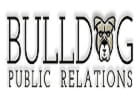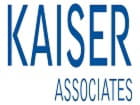
As your organization has grown and changed over the last few years, has it lost some of that excitement and dynamic spirit that fueled its’ early success? It’s not unusual for early excitement to give way to a less flexible atmosphere that seems to lack the employee creativity and top-down inspiration that was once to prevalent.Your workplace culture does not have to be a stale one. You can recapture or keep the excitement by focusing on increasing how employees see opportunity; making change routine by making it part of the way things are done every day, and encouraging innovation at every level and in every part of the organization.
Institutionalizing Change So That It Is Desirable
If satisfaction and preservation of the status quo is your organizational norm then it’s unlikely that opportunity will be seen, much less acted on. There should be a restless dissatisfaction with the current state. The problem with success is that it can create a sense of complacency. If you want your workplace to continue to be entrepreneurial and exciting, it (that means YOU management) must convince everyone that change is the organization’s overriding goal. With change comes opportunity.
How to Build the Adaptive Firm
Increase How Opportunity is Seen
This can be done through careful job design. The work should have defined objectives for which people will be responsible. Every level in the organization should be kept informed of its role in producing the final output of product or service. (Often known as “staying close to the customer.”) Another way of increasing the perception of opportunity is through a careful coordination and integration of functional areas. This allows employees in different functional areas to work together as a cohesive team.
Institutionalize Change as the Company Goal
A preference for innovation and change needs to be more important than preservation of the status quo. If opportunity is to be perceived, your culture must not only encourage innovation; it must establish it as a goal. Within this context, a desire for opportunity can exist if resources are made available and departmental barriers are reduced.
Instill the Desire to Be Innovative
- A reward system. Clear types of recognition should be given to those who attempt innovative opportunities. Rewards don’t have to be expensive; they just have to be visible
- An environment that allows for some failure. Fear of failure must be minimized through the general recognition that often many attempts are needed before a success is achieved. What people learn from failure is important information to an organization.
- Flexible operations. Flexibility creates the possibility of change taking place and having a positive effect. It shouldn’t take an entire army (or year) to change things.
Your Workplace Culture
The organizational culture is the value system. It flows from one place only: the top. Changing a culture is an evolution, not a process, not an event, and not a program. Impatience serves no one. Stamina is a requirement. Your workplace culture cannot change unless the people at the top change (or unless the CEO delegates the authority to change and then stands aside and allows it to happen.)
Tips for Shifting Culture
What you say has nothing to do with creating the organization’s culture. It is only what you do that matters.
Culture starts to be created with the first day on the job, as employees observe the boss’s every move. Be aware of their ongoing and relentless scrutiny and show that the messages you are sending are designed to encourage the culture you publicly espouse.
Just like skiing and gymnastics, you will not learn and improve in an environment where you are not allowed to fall down. Encourage risk taking and allow first-time mistakes. Determine how much risk and failure can be tolerated, and focus on what is learned from attempts.
Change is inevitable and the organizational culture will need changing from time to time. Take steps to inventory and alter the existing culture when it no longer represents what is best for the company. Don’t be afraid to ask “Why is it done this way? Is this the best/more effective/more efficient? Is there a better way? If we were creating this today, how might it be different? “
Do not underestimate the difficulty of changing a culture of an acquired organization (or your own organization for that matter). The road to change will take twice as long as you think, and casualties will be twice as heavy. Be prepared to go slow. Have a plan based on data, not just hopes and dreams. Spend time doing a cultural audit to determine how big the gaps are and what may need to be done to eliminate or reduce them.
Maintaining a responsive and flexible frame of mind while making the necessary adjustments for dealing with growth means building an adaptive organization. As you build the workplace, keep in mind the three critical responsibilities with which leaders need to be concerned:
- Increase the perception of opportunity.
- Institutionalize change as a goal.
- Instill the desire to be innovative.
If you build into your workplace culture the belief that
- Chances for success exist
- Change is the norm, and that
- People are expected and supported when using their ingenuity –
you will be able to keep alive a spirit of innovative as well as the excitement and energy that attracts and retains great people.
















